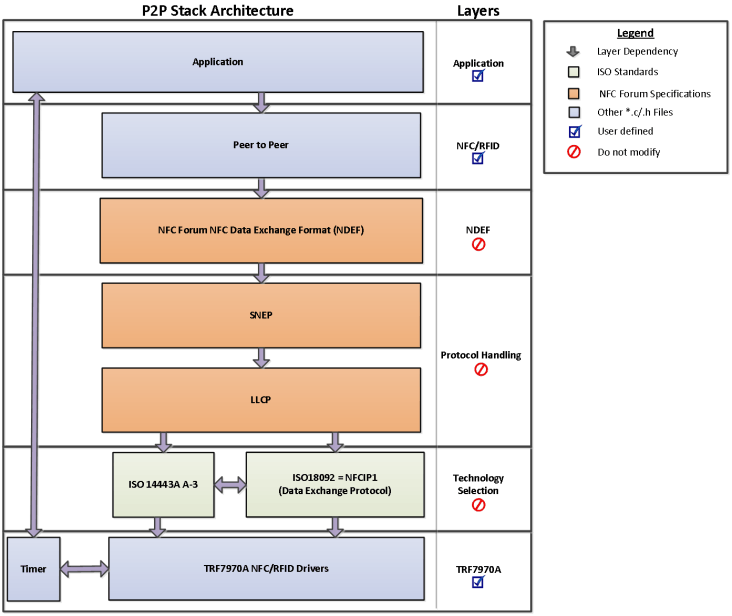SLOA192B April 2014 – March 2019 TRF7970A , TRF7970A
-
NFC active and passive peer-to-peer communication using the TRF7970A
- Trademarks
- 1 Introduction
- 2 Initial RF Collision
- 3 TRF7970A Register Settings
- 4 Peer-to-Peer at 106 kbps
- 5 Peer-to-Peer at 212 kbps and 424 kbps
- 6 Hardware Description
- 7 Passive and Active Peer-to-Peer Firmware Example
- 8 Quick Start Guide
- 9 Operational Overview
- 10 Peer-to-Peer Interoperability Results
- 11 Conclusion
- 12 References
- Revision History
7 Passive and Active Peer-to-Peer Firmware Example
This section explains which APIs are used by the NFC/RFID layer (see Figure 15) to initialize and handle the peer-to-peer communication. Furthermore, it covers how to implement a sample peer-to-peer application, which can send and receive an NDEF message to and from an NFC-enabled device.
The firmware example that contains the peer-to-peer APIs discussed in this document can be downloaded from http://www.ti.com/lit/zip/sloa192.
As downloaded, the firmware example includes the full TI Nfc stack which supports peer-to-peer, card emulation, and reader/writer modes. For applications that do not require all NFC operating modes, there are configuration options available to reduce the NFC stack memory footprint (only compiling required operating modes). These configurations can be made by modifying the #define statements within the nfc_config.h file, located at [Install Path]\nfclink\Source\headers.
 Figure 15. Peer-to-Peer NFC Stack Architecture
Figure 15. Peer-to-Peer NFC Stack Architecture